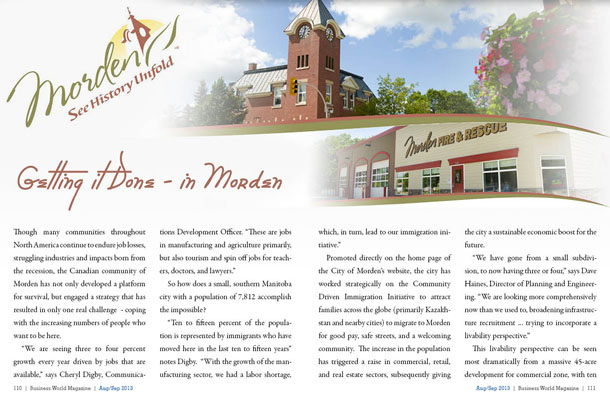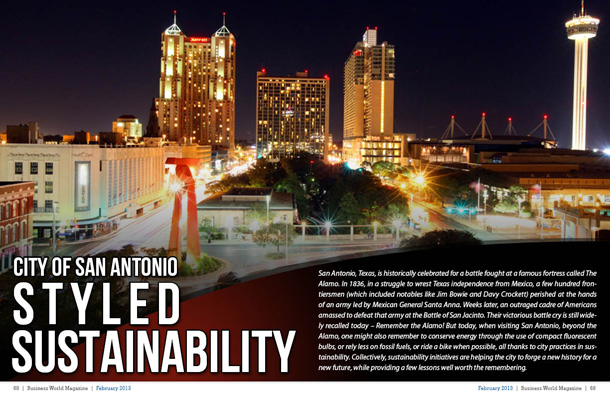

Though many communities throughout North America continue to endure job losses, struggling industries and impacts born from the recession, the Canadian community of Morden has not only developed a platform for survival, but engaged a strategy that has resulted in only one real challenge  – coping with the increasing numbers of people who want to be here.
“We are seeing three to four percent growth every year driven by jobs that are available,†says Cheryl Digby, Communications Development Officer. “These are jobs in manufacturing and agriculture primarily, but also tourism and spin off jobs for teachers, doctors, and lawyers.â€
So how does a small, southern Manitoba city with a population of 7,812 accomplish the impossible?
“Ten to fifteen percent of the population is represented by immigrants who have moved here in the last ten to fifteen years†notes Digby.  “With the growth of the manufacturing sector, we had a labor shortage, which, in turn, lead to our immigration initiative.â€
Promoted directly on the home page of the City of Morden’s website, the city has worked strategically on the Community Driven Immigration Initiative to attract families across the globe (primarily Kazakhstan and nearby cities) to migrate to Morden for good pay, safe streets, and a welcoming community. The increase in the population has triggered a raise in commercial, retail, and real estate sectors, subsequently giving the city a sustainable economic boost for the future.
“We have gone from a small subdivision, to now having three or four,†says Dave Haines, Director of Planning and Engineering. “We are looking more comprehensively now than we used to, broadening infrastructure recruitment … trying to incorporate a livability perspective.â€
This livability perspective can be seen most dramatically from a massive 45-acre development for commercial zone, with ten aces constructed for a business park and the rest for commercial and retail, and an alluringly new high-end, assisted-living facility called Homestead South at the end of the development.
“Homestead South built an 83-unit assisted living facility,†adds Digby. “The goal was to attract retirees to a private residential setting which feels more like living in an all-inclusive resort.â€
While consistent population growth certainly can warrant the private building of an assisted-living center, the 45 acre development got underway without the retail contracts typically in place for a project of this magnitude. To this, Digby asserts, “That’s where the leap of faith occurs … sometimes, you have to have confidence it will happen.â€
Even more impressive on the build of the commercial and industrial zone is the fact that the City itself acted as the developer on the project. A role almost never run through city hall, but a decision that would give back more to the community in the long run, and showcase and unwavering outlook of sustainability in the city.
“Rather than sit back and waiting for something to happen, council decided to step forward and make it happen to create a place to attract retail,†states Digby.
While such decisions and planning could be a guideline for any other government, this city has also uniquely benefitted by having a trusting and hardworking community. The Morden Community Development Corporation is driven by key local partners and citizens, however instead of acting simply as the voice for economic development; they provide the council directly with advice and recommendations on all issues related to the growth of the city’s own economy. The MCDC also acted as the main player in the commercial and industrial developer for the city.
Outside of the growth of the community, there are other major areas that must be adhered to in terms of infrastructure and the environment. Canada’s aging infrastructure and the environmental state of Lake Manitoba are concerns that ring throughout the nation and province respectively.
“We have a five to ten year old plant,†says Haines, “in which we have a treatment capacity to provide for the growth in the community. However, we were struggling with our surface and drinking water source, subsequently having an impact on our treatment system.â€
To counter impacts, city leaders have conducted studies which have since prompted moving away from lime soda applications to membrane filtration solutions in their THM process. Additionally, in their reservoir, they have replaced their above ground tower to ensure an increase in capacity.
Lastly, when studying waste water, they are working with their neighboring City of Winkler  to determine whether a regional, 12-mile long sewage network facilitating the needs of both cities  would make for a good investment. In Manitoba, the provinces regulations are becoming more and more rigorous for effluent requirements, so Morden is looking at either another step in their treatment process or redoing the process entirely.
With one eye on their current community needs and the other visioning for the future, Morden has managed to effectively coordinate all “day to day†infrastructure projects while also developing strategies to further enhance infrastructure as the community evolves in the future.  Through city leaders’ sheer resolve to act, complemented by their faith to invest in their home and their ability to responsibly formulate strategies and partnerships that not only prompt growth, but accommodates that growth; look to Morden to undertake even more in its evolving of future sustainable success.
For more information, please visit their website at: Â The City of Morden
Preferred Vendors of Choice:








